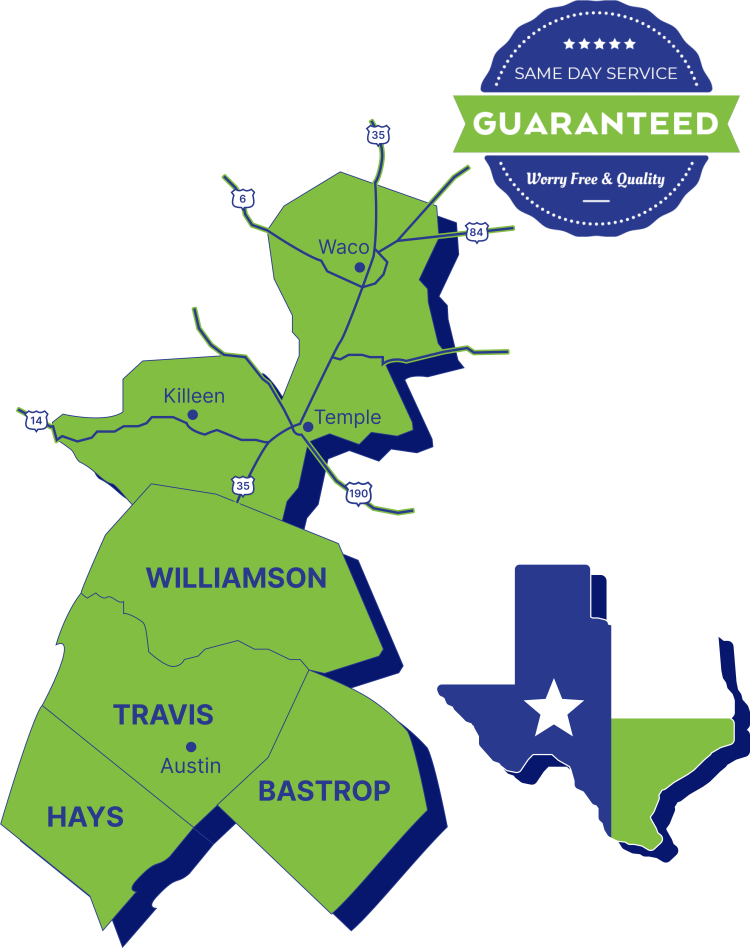Bug facts
Termites in Texas
Each year in the US, termites can cause $2 billion in damage, more than property damage caused by fire and windstorms combined.
In nature, they break down dead trees into biomass to be recycled into the soil, working non-stop 24/7. That can become a problem once they try to break down the structural timbers of your home.
While over 2,000 known species are found worldwide, only two types of termites can be found in Texas: the Subterranean Termites and the Southeastern Drywood termites. The main similarity is obvious, where termites will feast on wood and fiber near or within your home.
The second major similarity between the two is an organized caste system that denotes each individual’s hereditary role in the colony.
- Worker termites eat wood and care for the colony as a whole.
- Soldier termites protect the colony from danger. This type can sometimes bite, depending on the species.
- Reproductive termites grow wings, swarm, and eventually leave to start new colonies.
Southeastern Drywood Termites
Ranging in color from light yellow to black bodies with clear to smoky gray wings, the Southeastern drywood termite vary in size depending on their role in the colony, but most are under half an inch.
These critters primarily feast on cellulose, which is the harder portion of a grain. They receive all the water they need from this plant matter, which allows them to live nearly anywhere, though they prefer to live in warm or tropical climates, such as coastal Texas and San Antonio..
Telltale signs of this species include blistering wood surfaces and small pellets that look similar to sawdust, since droppings resemble the color of the wood they eat.
Subterranean Termites
Subterranean Termites can be up to twice the size of drywood termites, but are not longer than one inch. Depending on the termite’s role, they are different colors. Reproductive termites can range from clear to brown to black, while soldiers and workers remain off-white. Worker termites don’t have eyes.
True to their name, this species lives below ground in elaborate tunnels in a variety of climates. They are nondiscriminatory in their food sources, focusing on anything made of fiber including paper, wood, burlap, and insulation. These termites will travel from their colony to their food source everyday rather than living in structural wood. This species is found throughout Texas.
Mudtubes are strong signals of a subterranean termite colony. These tubes protect them from predators, and can be seen on the side of infested buildings.
Avoiding Termites
Easy solutions to avoid termites:
- Keep firewood away from the home and other structures
- Seal unfinished wood found around your home
- Ensure all windows, doors, and vents are sealed or use a meshed screen
- Avoid moisture or pooling water near the home
- Aim to lower humidity in the home and crawl spaces
(Sources: Texas A&M University, USDA)
GET STARTED TODAY!
Get a Free Estimate
"
These guys are the best! Incredibly friendly, fast, and super knowledgeable. They answer my texts in seconds, schedule visits ASAP, and are very thorough both in their service and filling me in on what I need to know and look out for. Plus, love working with a family-owned business. 10/10 recommend!
Becca Sherman in 2021.
Same day service
Get started today!
Call usService Areas
The Award Winning Pest & Lawn Company in Austin, TX
Our thorough pest and lawn care solutions provide with elimination from, ants, fungi, roaches, spiders along with pesky weeds and more! Give us a call and find out how we can help get your home back on track. We serve all of Travis and Williamson Counties as well as Hays and Bastrop Counties.
